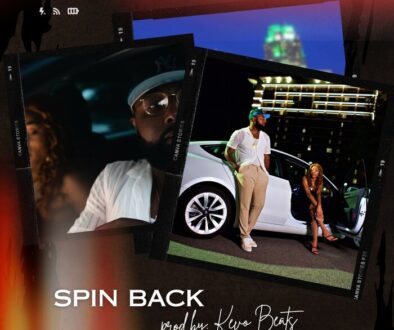Did the MP3 destroy the music industry?
Birth of the MP3
In 1988, The Moving Picture Experts Group convened to develop standards for audio and video compression, including a way to get video onto CDs. MP3 would be one of the results of the committee’s work.
The MP3 holds a place in our collective imagination as the de facto medium for music listening on our computers and smartphones. Like Kleenex with tissues, the term MP3 is eponymous with digital music files. This is thanks in large part to the havoc that the MP3 wreaked on the music industry starting two decades ago.
The dust has settled and listening to music digitally is now the norm, with artists, labels, and listeners largely seeming to have accept streaming as the new industry model. It’s easy to take for granted what exactly we are listening to when we stream something on our laptops and on our phones. Chances are what you’re hearing isn’t even an MP3.
Weirdly enough, the MP3 is a proprietary encoding protocol protected by copyright. As such, Spotify by and large favors the open–source compression codec Ogg Vorbis. Apple has favored AAC since the original launch of iTunes. YouTube’s audio is compressed in AAC too.
What exactly is a codec and why are there so many of them? Codec is an abbreviation of coder–decoder. In the context of audio, it’s the procedure that turns audio into a digital file and back again.
MP3 is a standard for audio compression that shrinks the size of a music file without, ideally, any perceptible loss in sound quality. Think back to how little space computers must’ve had back in the late ‘80s, when development on the MP3 first began.
If the 300–plus GB hard drive on your computer is just about full now, you can imagine how crucial it must have been to compress digital audio files for easy storage and transfer back then.
One second of stereo music on a CD takes up about 1.4 megabits. MP3 encoding yields a file that’s 12 times smaller.
While the stage was being set for the rise of the MP3 and file sharing, the record industry was in the midst of some of its loftiest sales ever years. In the ‘90s and early ‘00s, blockbuster releases sold in the neighborhood of 10 million copies. By the end of the ‘90s, Garth Brooks had enjoyed five separate albums going diamond.
Between 1995 and 2004, there is a nearly unbroken stretch of the year’s top selling records moving more than 5 million copies. The seven top–selling records of 2000 can claim this distinction, too.
Unless you’re Adele, these kind of sales are just not replicable these days.”
Unless you’re Adele, whose last album 25 beat the long–standing record for strongest first week sales held by NSYNC’s No Strings Attached, these kind of sales are just not replicable these days.
The turn–of–the–millennium boom years for the record industry were accompanied by mergers and acquisitions among the major labels. This meant that CD printing was consolidated, with fewer physical plants producing them.
Ironically, that consolidating move made leaks ever more common. Fewer facilities meant that the file sharing community needed fewer contacts in order to secure their leaks
The network of IRC and topsites used by the Warez Scene were ultimately inefficient, inaccessible, and for legal reasons, carefully guarded. This kept leaked releases relatively contained.
Napster would light the match that set fire to fuel spilled by the MP3 and networks of dedicated leakers.
Napster was invented in 1999 by an 18–year old college dropout and Warez enthusiast named Shawn Fanning. With Napster, Fanning pioneered the peer–to–peer file–sharing platform, allowing users to exchange files directly with each other. At its peak, Napster had 80 million registered users.
We’re all familiar what follows. There were the subsequent lawsuits spearheaded by devastatingly rich rock stars like Lars Ulrich, major label hand–wringing, and heavy–handed litigation by the RIAA.
We have the benefit of hindsight for criticizing the industry’s supposed shortsightedness. But it’s illuminating regardless to revisit the way the MP3 revolution was spoken about in 2000, at once a banner year for the music industry as well as the year of Napster.
The Already-Shifting Music Industry
Research groups were already anticipating the death of record stores and the coming ability for listeners around the world to tap into what Charles C. Mann, in an article for The Atlantic, was already describing as “a vast cloud of music” via the internet.
Even industry leaders like Edgar Bronfman Jr., then head of Universal, was anticipating the rise of what some starry–eyed commenters called the heavenly jukebox.
“Soon,” he declared in a speech that May, “a few clicks of your mouse will make it possible for you to summon every book ever written in any language, every movie ever made, every television show ever produced, and every piece of music ever recorded.”
How this would happen in a way that preserved the economic interests of media companies in general and record labels in particular was still unclear.
A Berkeley economist had the somewhat prescient vision of corporate patronage which sidestepped the traditional industry entirely. Why can’t Coca-Cola, which then had higher annual revenues than the entire music industry, market music as an advertising campaign?
Instead, the industry opted for draconian legal responses and numerous failed attempts to shift towards secured, copy–protected music. These approaches proved ineffective.
Brandenburg, for his part, insisted that any secured format for distributing music on the internet would have would not be compatible with all of the platforms and audio players hitting the market.
Ultimately, it’s the industry’s stunning lack of vision on this front that made the rise of the MP3 so devastating.”
But the MP3 solved that problem too well. It was compact, of adequately high sound quality, accessible across platforms, and incredibly easy to reproduce and share.
Ultimately, it’s the industry’s stunning lack of vision on this front that made the rise of the MP3 so devastating.
Again in hindsight, it’s ironic that the new industry standard of streaming (with our Spotifys and YouTubes) was engineered by the same type of plucky tech start–up types who unleashed Napster on the world.
Not that we should get too comfortable with the streaming service landscape we see now. Rdio, Grooveshark, Songza, have all gone to the grave of failed streaming services.
Soundcloud, itself dogged by IP lawsuits, has found itself floundering in its attempts to monetize and compete more directly with Spotify and Apple Music.
Most other services are in bad shape. “Napster” – which is really Rhapsody wearing the necrotized remains of the Napster brand like a Silence of the Lambs-style face mask – has struggled to keep pace with paying subscribers.
Tidal has been wracked by lawsuits, leadership shuffles, and late payments. Even Spotify, which has the biggest user base, has yet to demonstrate whether the streaming model can sustain itself. Spotify has not turned a profit, while analogues in TV and film, like Netflix, are already profitable.
Competitors like Apple Music or Amazon Music Unlimited or Google Play Music are backed with so much capital that they don’t even have to make money to be sustainable—a relationship not unlike that of the Coca-Cola patronage envisioned more than fifteen years ago.
Even if the MP3 is no longer the principle format we use to listen to music digitally, it’s not yet clear that the industry has achieved an equilibrium in the face of the precedent it unleashed.



